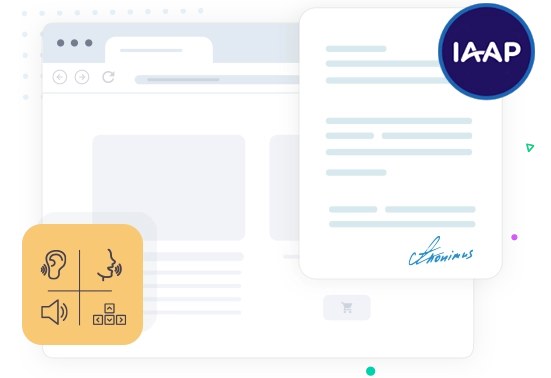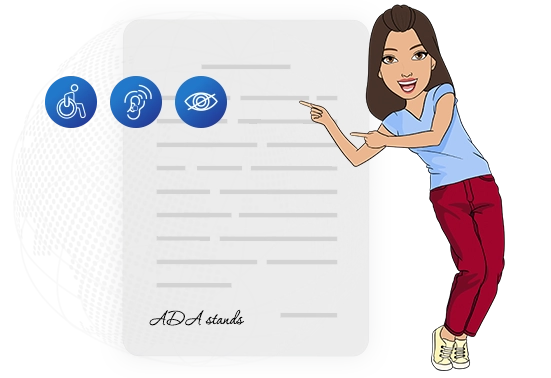VPAT Versions & ACR: Understanding Accessibility ComplianceTL;DR - VPAT versions evolve to align with updated accessibility standards like WCAG and Section 508. Businesses must choose the right VPAT version to document compliance accurately. The ACR (Accessibility Conformance Report) is the completed VPAT that organizations use to demonstrate accessibility conformance. This guide explains key VPAT versions, their differences, and the importance of ACRs. 
What Are VPAT Versions?VPATs are regularly updated to reflect changes in accessibility regulations and technological advancements. Each version aligns with the latest accessibility requirements to ensure that organizations provide accurate compliance documentation. 
VPAT 2.0 vs. 2.1 vs. 2.2 vs. 2.4Understanding the differences between VPAT versions helps businesses choose the most applicable one for their needs.VPAT 2.0 established a structured approach to documenting accessibility compliance. However, as regulations evolved, VPAT 2.1 became necessary for companies working with government agencies, as it incorporated Revised Section 508 standards. VPAT 2.2 went further, adding WCAG 2.1 requirements, which made it more relevant for businesses focused on web accessibility. With the release of VPAT 2.4 and 2.5, accessibility reporting has improved significantly, ensuring compliance with WCAG 2.2. Organizations should always use the latest version to stay aligned with current laws and procurement requirements. Explore VPAT Testing, Audits & Reports What is an ACR (Accessibility Conformance Report)?An Accessibility Conformance Report (ACR) is the completed version of a VPAT. It provides a structured, detailed summary of accessibility conformance, helping businesses communicate their compliance levels clearly to buyers, regulatory bodies, and procurement teams.An ACR includes a breakdown of WCAG and Section 508 compliance, highlighting both fully compliant and partially compliant elements. It also provides an assessment of accessibility barriers and outlines recommended remediation steps. This transparency ensures that organizations accurately represent their digital products` accessibility status. Unlike a VPAT template, which is a blank form, an ACR is a fully completed document that details how a product meets accessibility requirements. This is a crucial step for organizations seeking government contracts or enterprise partnerships. Learn more about VPAT Compliance & Accessibility Why Do VPAT Versions & ACRs Matter?Choosing the correct VPAT version and completing an ACR ensures businesses remain compliant with accessibility regulations. An outdated VPAT may not meet current legal standards, leading to contract rejections, accessibility complaints, or legal consequences.By updating to the latest VPAT version and ensuring an accurate ACR, businesses can:
Get Professional VPAT & ACR SupportEnsuring compliance with the latest VPAT versions and creating a complete ACR can be complex. EqualWeb offers expert VPAT evaluation, auditing, and reporting services to help organizations meet accessibility standards efficiently. Our team of accessibility specialists ensure that your documentation aligns with the latest compliance requirements, minimizing legal risks and maximizing accessibility.Next Steps for VPAT ComplianceIf your business requires an updated VPAT or needs to generate an ACR, EqualWeb provides expert support in accessibility assessments.
FAQs About VPAT Versions & ACR |
Web Accessibility is EqualWeb
Accessibility made easy with AI technology and certified experts
Web accessibility compliance with CPAA-certified experts
Get Free trial
7 days FREE Trial Unlimited pageviews & user session for all plans
|

